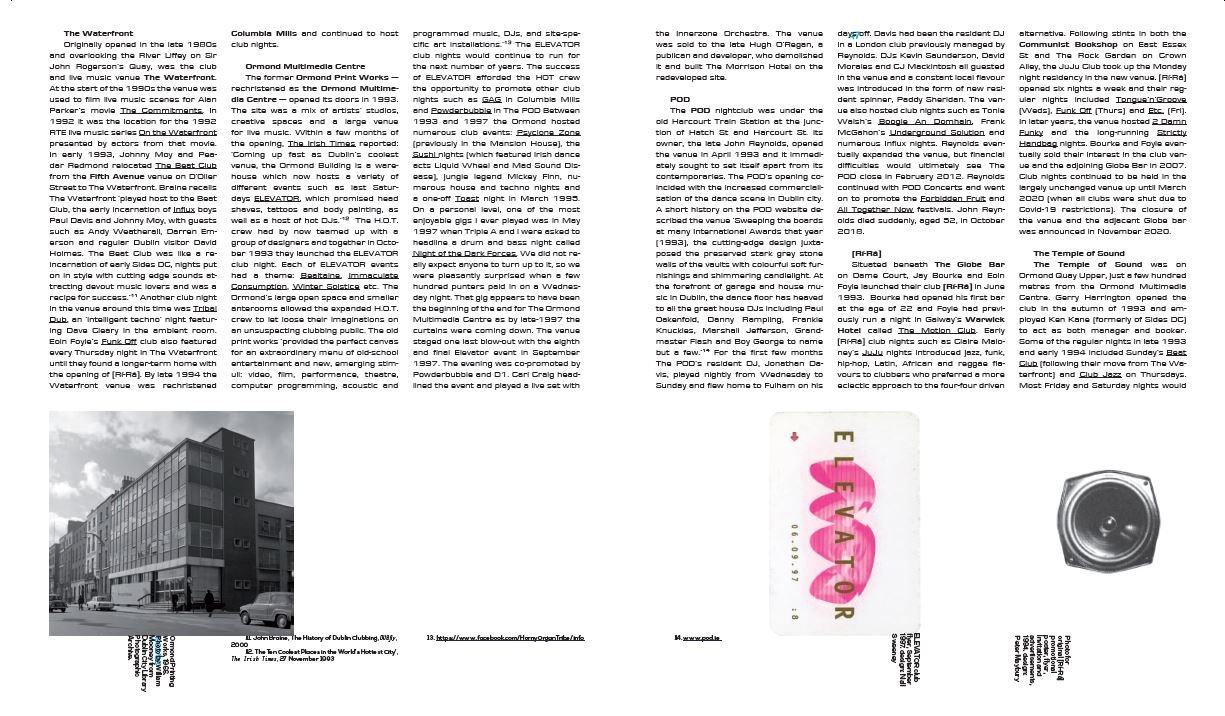"By the end of the 1980s venues such as Sides DC on Dame Street, The Waterfront on Sir John Rogerson’s Quay and Minsky’s on Ely Place had opened their doors. By this point, dance music had started to filter into the weekly UK record charts and the wider British pop consciousness. BBC radio and television provided vital exposure to new music that wasn’t getting airplay on Irish TV or radio stations. In those days the UK charts were a big deal for Irish kids. The first house tune I remember from this period was Love Can’t Turn Around by Farley Jackmaster Funk. That was in 1986 and early the following year Steve Silk Hurley’s Jack your Body rode high in the charts. By the time 1988 rolled around Inner City, Bomb the Bass and S’Express all entered the UK charts. D Mob’s We call it Acieed and Humanoid’s Stakker Humanoid gave a taste of the burgeoning UK rave and party scene to suburban Dublin kids like me. Alongside the increased chart success of dance music, throughout 1988 and 1989 UK warehouse raves were making media headlines. Given the proximity of the two islands it was only a matter of time before the influence of the UK scene began to permeate Dublin youth culture."
Text Extract from Throw Away Prologue
[Rí-Rá] flyers 1993-1995“Browsing through this book gives us so many amazing examples of our club flyer history from the 90s in Dublin. It allows us to reflect on our club history, too, with its unique magic, all the venues, the DJs, club nights and events that will never now be forgotten.”
Aoife NicCanna
Dublin Club Venues 1990 - 1999“By the end of the 1980s, the age-old method of flyer production and distribution was in steep decline. It was replaced overnight by desktop publishing, design software and cheap colour printing. Access to personal computers and software in the early 1990s meant that anyone with the means and some basic know-how could manipulate images and experiment with composition and colour. Coupled with the steady rise of the internet over the course of the 1990s it meant it was easier than ever to appropriate visual information and utilise it in flyer design. This approach to design mirrors the ‘cut and paste’ approach adopted in electronic music production over the same period. As technologies became more advanced, the design and music worlds became excellent at recycling ideas to create new work.”
Text Extract from Throw Away Introduction
Throw Away - Front CoverDublin Clubs 1992-1993“The purpose and importance of Throw Away goes well beyond providing a thrill of nostalgia, if you were there, or a shock of the old, if it was before your time. Although both of these sensations will be engendered by this collection of nightclub flyers, its real significance is as a record of the changing social fabric of nineties Dublin told through its material detritus. It acts as a kind of visual psychogeography of lost spaces and the people who inhabited them. A dérive through a Dublin demi-monde, a window on Nighttown.”
Niall McCormack
Elevator flyers 1993-1997Throw Away - Back Cover





